While you explore the cultural sights in Rovinj and walk through the narrow streets or small squares of the town, you will discover historical sights in Rovinj. Starting with the medieval town walls and gates, you will be taken under the Balbi’s Arch, and along the picturesque Grisia Street to visit the Rovinj’s city palace, famous churches or the castle on St. Andrew’s Island.
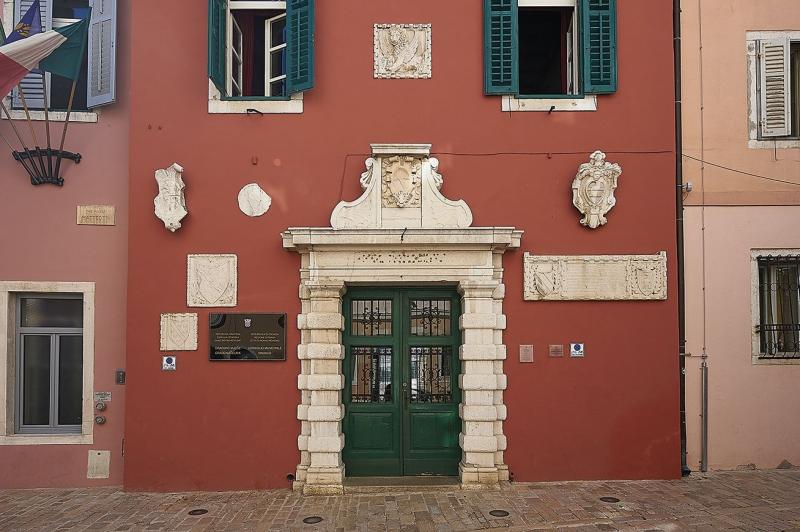
City Palace
The seat of the City mayor and the entire city administration, once this was the Praetorian Palace whose „foundations“ date back to 1308. In one part of the ground floor there was also a prison while on the upper floor there was City Council Hall, offices and the file room. The front and the atrium were restored in 1850 and 1860 and in 1935 when the coats of arms were placed there representing Venetian and Rovinj families and the City.
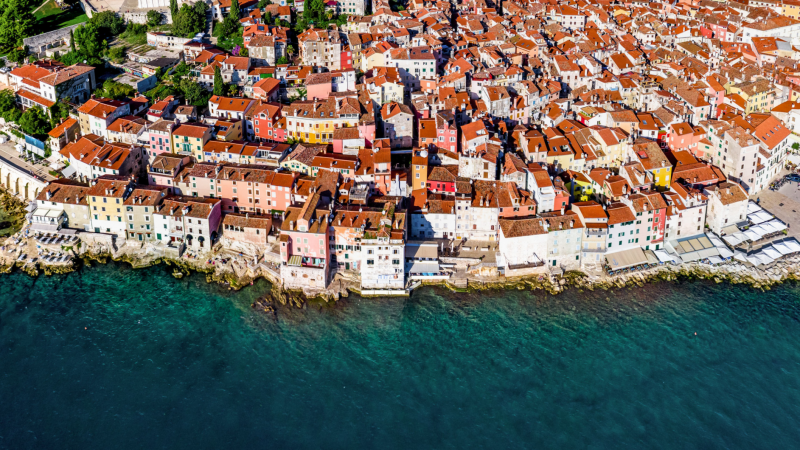
Rovinj’s life started on what used to be the island of Mons Albanus. The first archeological traces of life date back to the Bronze Age, and the old city started developing in the 3rd century.
At the beginning of the 18th century, the city started expanding outside the city walls to the mainland. The channel between the island and the mainland was filled with earth in 1763. And so, the old part of the city found itself on a peninsula. The old city bears witness to the times gone by and the diligence of local masters.
The limited space conditioned the construction of narrow houses, narrow streets and small squares. The characteristically built chimneys are a special feature of the old city as well. Thanks to the above-mentioned special features, the old city was proclaimed a monument of culture in 1963.
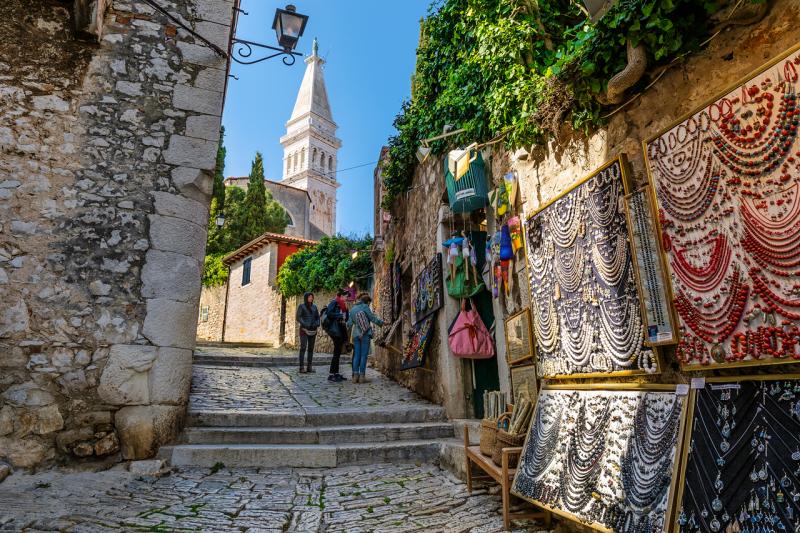
Grisia Street is a beautiful street with cascading steps that leads up to the plateau of the parish church of St. Euphemia. It belongs to the most recognizable trademarks of the old town of Rovinj. The street is picturesquely cobbled with winding stone staircase. It is unique for its one-day art competition exhibition, which has been organized in Grisia continuously since August 1967 by the Rovinj Heritage Museum.
The exhibition was created at the initiative of members of the Art Colony who aim to contribute to the spreading of visual arts and the revitalization of the town by gathering artists and displaying their works out in the open. A great number of artists display their works on Grisia attracting the attention of visitors and tourists.
Artists such as Mascarelli, Bassani, Matić, Milić, Škrnjug, Šumonja, Vuličević and many others participated in this street exhibition numerous times.

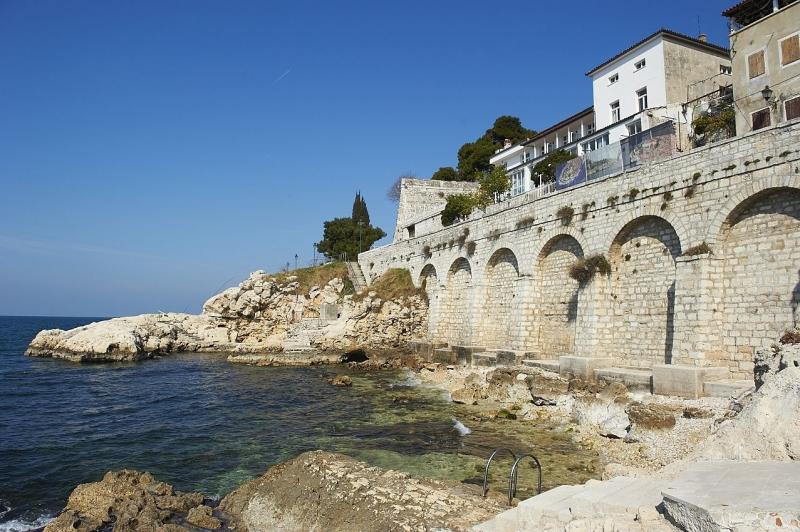
Town Walls and Gates
As early as in the 7th century, Rovinj was surrounded by city walls that were subsequently strengthened by towers. The city had seven gates, three of which have been preserved to this day: The Gate of St. Benedict, The Portica and The Gate of the Holy Cross.

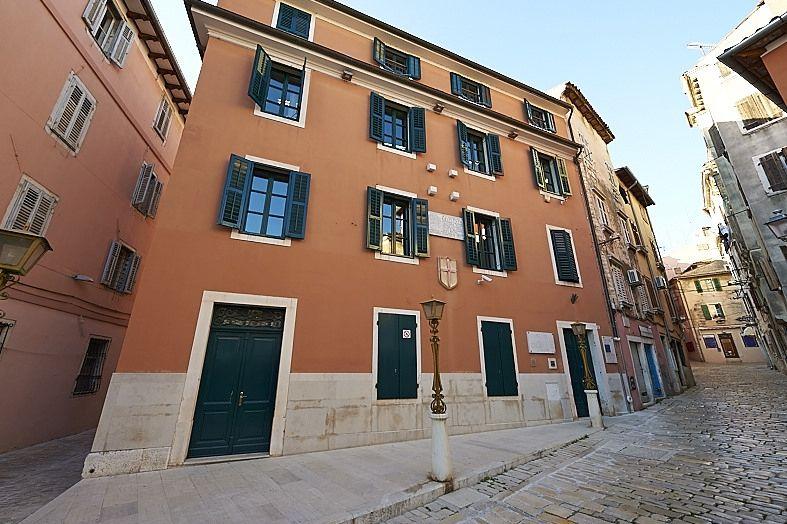
Centre for Historical Research
Founded in 1968, it is situated in the immediate vicinity of the city palace. The Center disposes with a large library (more than 80.000 works) that has had the status of „Biblioteca depositaria del Consiglio d´Europa“ since 1995 – the library where the European Council’s material, related to the issues from human rights and minority rights, is archived.
From 15th to 18th century, this was the location of St. Damjan’s public granary and then in 1872 it became the location of the first tobacco manufacture in Rovinj.
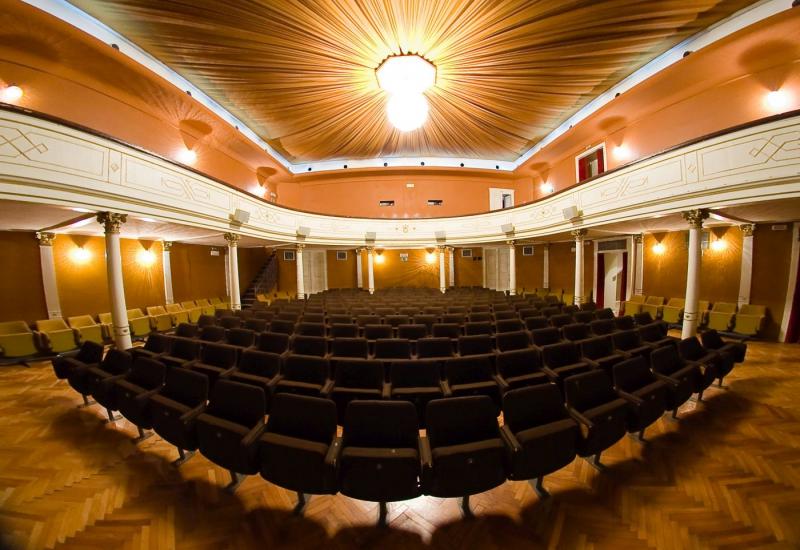
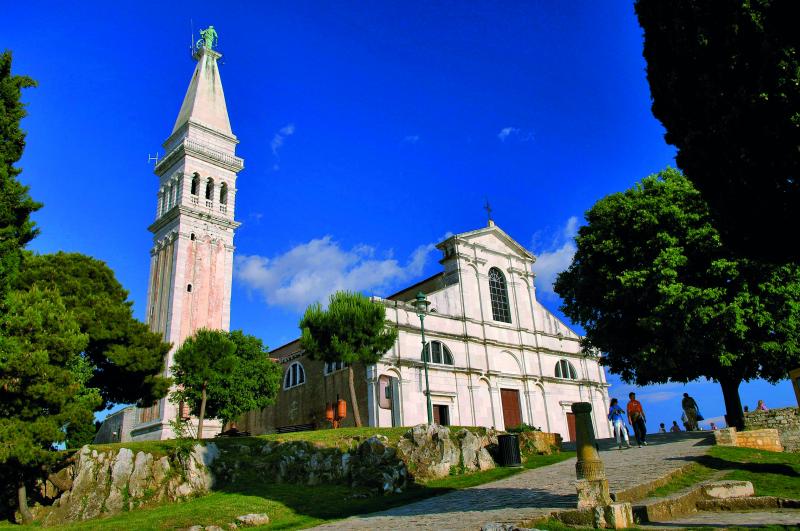
Church of St. Euphemia
In 1780, the south façade was partly covered with stone according to the design of Rovinj architect Simone Battisitella (Rovinj, 1726-1799). There is a copy of the Gothic bas-relief depicting St. Euphemia holding a model of the town by the front door (the original is kept on the wall of the St. Euphemia presbytery). The new façade was made according to the design of Rovinj architect Giacomo Depozza. As we learn from the inscription on the lintel above the main the doors (DEUS QUI OPERATUR AND SUIS // HAEC OMNIA IPSE IPSE INCEPIT PERFECIT – 1861), the façade was built from 1861 to 1865. The acrostics on the lintels above the side doors of the Blessed Sacrament and St. Euphemia included the dates of their construction (15 July 1733, and 2 February 1732). The acrostic on the lintel above the south façade doors (erected in 1733) was placed by the municipality that had the patronage of the church. The interior space is dominated by two sets of six arcades and five pillars, dividing it into three naves, of which the central is higher, as well as three beautiful detached altars. The motif of the arcades and pilasters is repeated on the perimeter walls with four altars on each side. The symmetric disposition of the arcades and pillars, longitudinal orientation towards the altars and grey colour of the stone material give the interior a special Baroque dynamism and emotion. The main and side altars (of the Blessed Sacrament and St. Euphemia) were made by Venetian master Giacomo Laureato (17th -18th century) in the period from 1739 until 1741, while the statues of St. George (in the middle, with a dragon), St. Mark (on the left, with the lion) and St. Roch (on the right, with the dog) on the main altar, and the statues of angels on the altar of St. Euphemia, are the work of master sculptor Alvise Tagliapietra (Venice, 1670 -1747) and his son Ambrogio. The statues of angels on the altar of the Blessed Sacrament were made by sculptor Giovanni Marchiori (Venice, 1696-1778). The walls of the choir behind the main altar are decorated by three large paintings that used to adorn the old Rovinj parish church. Paintings were returned to the church in 2013 after many years of restoration at the Croatian Conservation Institute. Traditionally, these paintings are attributed to Pietro Pergolis from Florence who came to Rovinj in the late 16th century.
The Last Supper, dating from 1574, shows the influence of Tizian and Jacopo Bassano. Prayer on the Mount of Olives and Sleeping disciples, which author was inspired mainly by the work of Jacopo Tintoretto for the Brotherhood of St. Roch (in Venice), are two connected scenes that had originally covered the wall surface between the arches of the church. In the niche of the altar of the Blessed Sacrament is a tabernacle in the form of ‘tempietto’ with silver doors. In 1777, the namesake brotherhood commissioned a sumptuous embossed silver antependium which was made for this altar by jeweller Angelo Scarabello (Este, 1712-Venice, 1795), which is one of the masterpieces of the Venetian late Baroque goldsmiths. The central scene, knurled with gold, shows the Supper at Emmaus. Side allegorical figures in poured and gilded silver, depicting Faith and Charity as virtues, are of great importance. On the altar of St. Euphemia is a significant stone gilded and painted statue (15th century) and behind, in its choir, is a sarcophagus with the body and the relics of St. Euphemia from Proconese marble made in Aquileia (approx III-IV century AD). The Saint’s body can be seen through the small window on the sarcophagus. Her face is covered with a wax mask made by artist Mila Vod (Budapest, 1888-Zagreb, 1968) in 1953. The left arm is missing which, according to the legend, was kept by the Venetians at the church of St. Kancian after the Genoese had returned the relics taken from the Istrian churches during the Genoese-Venetian War (1378-1381). All the ceilings (including the seats of the main choir) were made by Giovanni Berengo called „Napolachi“ from Venice until 1750, while stucco work ceilings are attributed to Giovanni Lattuga, also from Venice. Decorations of the choir and the presbytery of the side altars from 1883 are the work of Leonardo Riga from Udine and Giovanni Bino (1829-1914) from Trieste.
The bell tower of St. Euphemia
On 7 October 1654, the construction of the new bell tower according to the design of Milanese architect Alessandro Manopola started on the site where a small ruined bell tower had stood since the ancient times. The construction was later continued by other Milanese architects, while Cristoforo Bellan, also from Milan, brought it to its end in 1687. Its architectural lines, distinct vertical swing, beautiful loggia for bells (about to 2/3 of its height which is approx 58 m), the upper balustrade, and a pointed tip, are typical for the Venetian bell towers and it is one of the most beautiful in Istria. A large statue of the Saint (4.70 m high), made in copper plates in the workshop of the Vallani brothers of Maniago, was set on the top of the bell tower on 11 June 1758 replacing the old one which had been destroyed by lightning. The statue is placed on a shaft and rotates with the wind, according to the design by Simone Battistella (Rovinj, 1726 to 1799). In 1993, it was pulled down from the tower to be fully restored. From the ancient historical Venetian bells cast in 1794 in the Venetian workshop of the Canciani family, only one large bell has been preserved and is kept in the church. Today’s three bells were manufactured at the Innsbruck foundry from 1994 to 1995.
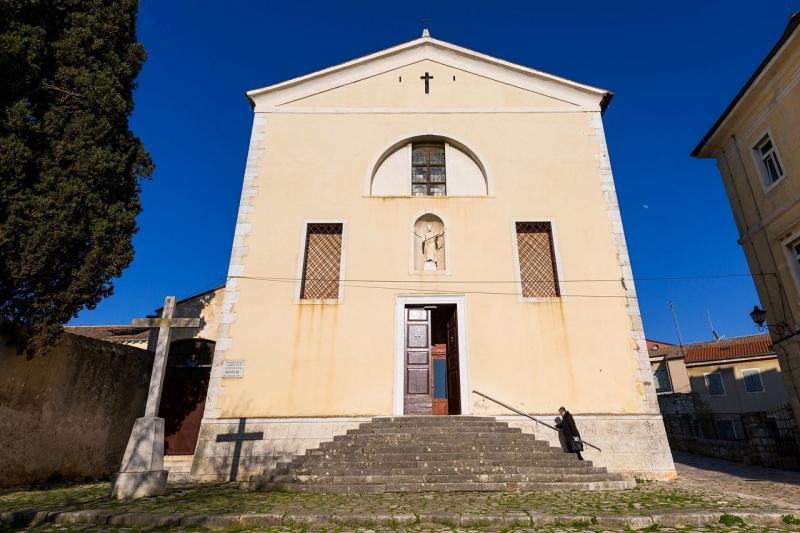
Franciscan Monastery
Events in Rovinj
All year round Rovinj’s stage‘ abounds with musical notes and rhythmic dance movements. In the open, in shops, in the narrow streets of the old city or in the mystery of Euphrasiana and hidden galleries, discover the wealth of diverse events. Please note: the Tourist Board is not responsible for any decision of the organizers to change the terms, participants, programes and prices or to cancel performances.
Outdoor and Active Holidays:
Football, diving, tennis, fitness centers, kayaking, free climbing, riding, angling and Underwater Fishing, indoor sports and windsurfing
